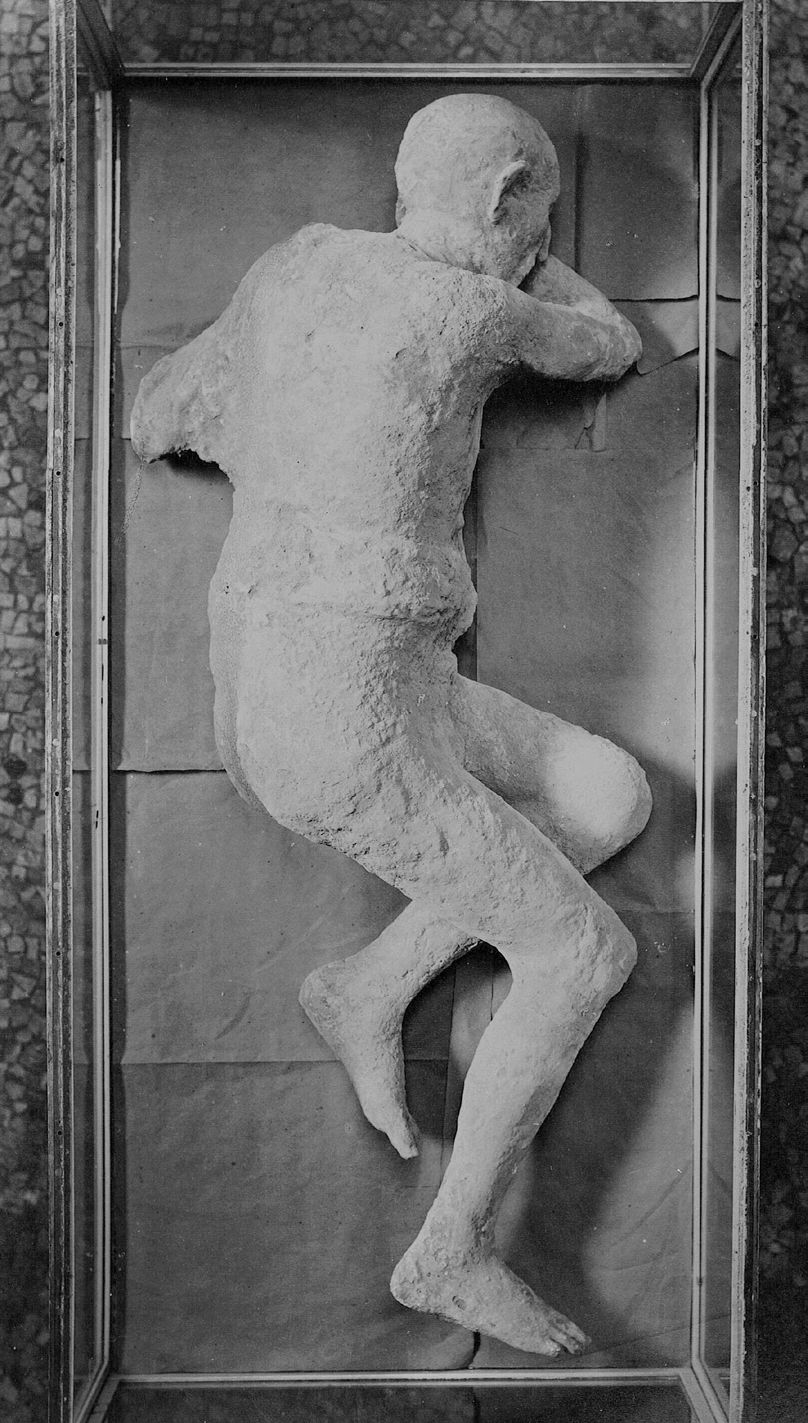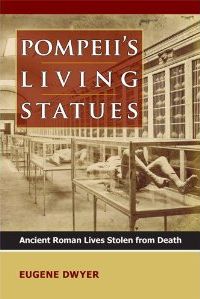By Eugene Dwyer
Plaster casts of the Pompeian victims, first made by Giuseppe Fiorelli in 1863, have become world famous through post cards, documentary films, and now traveling exhibitions.
Direct exposure to the casts, whether one experiences them in Pompeii or in a museum setting, can be very moving or it can be unaffecting, depending upon the circumstances and expectations brought to the experience by the visitor. To stumble upon a cast unexpectedly in a dimly lighted vault can be a memorable experience.
Fiorelli’s own initial discovery of victims, made by freeing his newly made plasters of the surrounding earth, came as such a shock that he claimed to have “stolen from death” the bodies that had been concealed for more than eighteen hundred years.
In fact, Fiorelli’s process made it possible to see the faces and the helpless gestures of the victims at the very moment they were overcome by the volcano. No one before Fiorelli had seen ancient Romans as “living persons.” Portrait sculpture and ideal or mythological sculpture and painting had been the basis of most people’s acquaintance with the ancients, leading to exalted notions of the beauty of the ancients.
The experience of human remains was limited to skeletons, gruesome but insufficient to contradict the supposed veracity of the works of art. Now it was apparent that the Pompeians had been heavily clothed, mostly well shod, and that they strikingly resembled contemporary inhabitants of the zone. Most noticeably, they appeared to contradict the images handed down in ancient art.


